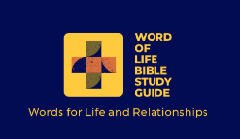Last time we saw that the biblical text (
Gen. 1:1-5) focused on God as Creator of the world. From this derive awareness of the presence of God, dependence and humility, which are guiding principles of Christian living. In turn, from this derives the emptying of self to make space for the creative power of God in our lives. Choosing to accept the truth contained in the first verse of Genesis is a choice for life and God, not welcoming the truth of this verse in our lives is choosing death and self. One choice brings us into line with the will of God for us, our own well-being and self-fulfilment, the other leads further and further away from him and from his plan for us. To be with God now and forever or to be away from him, that is the basic choice of life. Whether we like it or not this is the basic choice that has to be made. To pretend this choice is irrelevant is to exclude oneself from life and to remain imprisoned in the culture of self-destruction, death.
Now that the light of God has shone in the darkness, the creation process can continue. God's light is the very presence of God himself, who is light (see 1 John 1:5). It is his splendour and his glory.
The creation now follows a set pattern, punctuated by refrains, one of which gives expression to the creative power “let there be…” or “let the…” and the other, an expression of satisfaction “it was good”. It is as though God stands back to admire his handiwork.
The order of creation is not necessarily in accordance with scientific chronology so it would be pointless to object that science teaches differently. The creation of the various elements is ordered in such a way as to create a
crescendo effect moving towards the peak moment of that creation. There is increasing dignity and harmony in the creative activity leading up to the creation of man, the most important moment in the entire creation process and the very reason for the existence of everything else.
We can imagine God completing something similar to a jigsaw puzzle where each piece or element of creation is carefully inserted into its correct and unique place, all working up towards the final piece that completes the picture, man.
The creative activity of God proceeds in the following order:
- The First Day—Light
- The Second Day—Sky
- The Third Day—Dry Land and Plants
- The Fourth Day—Sun, Moon, and Stars
- The Fifth Day—Fish and Birds
- The Sixth Day—Land Animals and People
- The Seventh Day—Day of rest
Notice the change in the refrain: ‘let there be’, ‘let it’, ‘let the waters’, ‘let the dry land’, ‘let the earth’, ‘Let there be lights’, etc. When we arrive at the creation of man there is a more personal note: ‘Let us make’, which reaches sublime heights in the expression “in our image, after our likeness”. God also speaks to man, unlike the rest of creation. A relationship is being established, one of loving care that provides for man’s every need. Everything was building up to this climax and then there is a return to the more frequent “let” “let them have dominion”. This clearly denotes a literary technique, we are not interested in scientific accuracy which, if at all present, is at best marginal.
